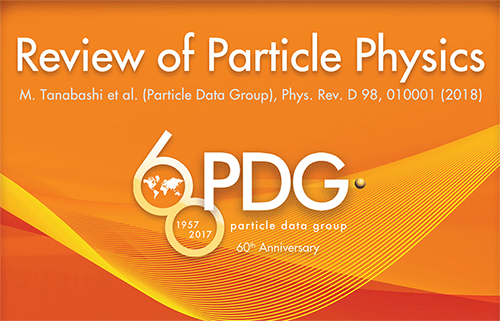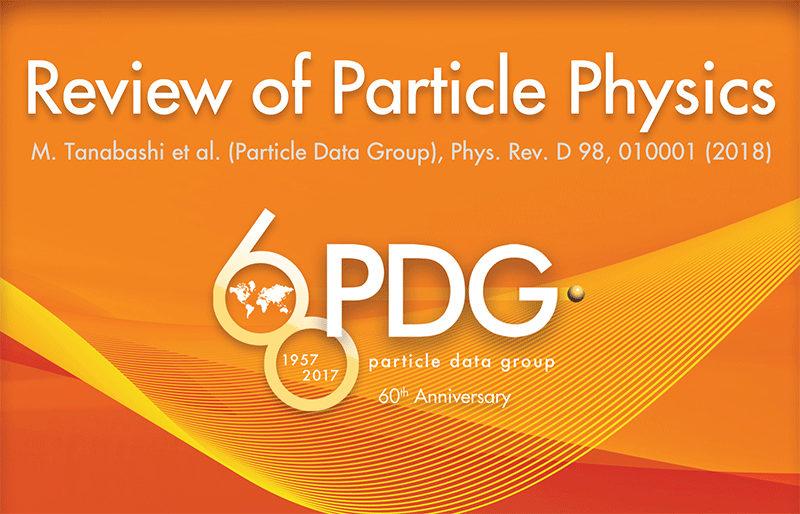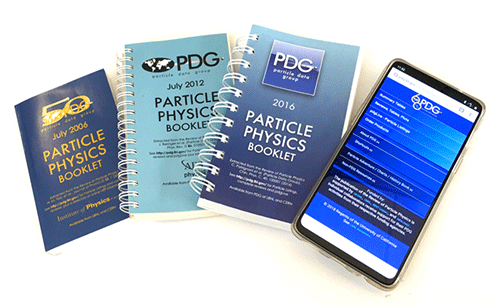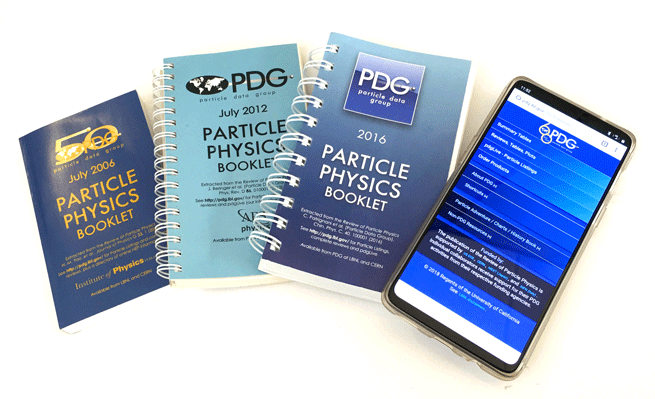Review of Particle Physics Celebrates its 60th Anniversary Edition
The 60th anniversary edition of the Review of Particle Physics appears online today in Physical Review D. Often referred to as the bible of particle physics, the biennial compilation of particle properties, topical reviews, and physics facts is part text book and part encyclopedia. But what it lacks in poetry it makes up for in fans: Some 30,000 people order the booklet version of the Review with each new edition.
“It’s sort of an icon,” says Michael Barnett of Lawrence Berkeley Laboratory (LBL), who from 1990 to 2016 headed the Particle Data Group (PDG) responsible for preparing the Review. “People say that when they got their first booklet, it was the first time they felt like they were really particle physicists.”
It all began with a 1957 paper by Murray Gell-Mann and Arthur Rosenfeld, which tabulated the properties of heavy mesons and hyperons. A year later, Rosenfeld and Walter Barkas updated the tables in an internal report for LBL (then Lawrence Radiation Laboratory) and made an accompanying “wallet card.” By 1964, Rosenfeld, Barkas, and three other Berkeley authors had teamed with Matts Roos of Nordita in Copenhagen to publish the tables in a 28-page paper in Reviews of Modern Physics.
Today, thanks to a steady stream of new data from facilities like the Large Hadron Collider at CERN, the Review has ballooned into an 1898-page tome. It’s also no longer a few-person job. For the latest edition, the PDG called on 227 experts to write reviews and comb through 758 new papers with 2873 measurements.
Juerg Beringer of LBL, who has headed the PDG since 2016, says that getting busy physicists to meet deadlines for collecting data and writing reviews is a bit like herding cats. But, he adds, “Seeing this come together and knowing that you produced a work that is pretty much used by the whole field—that’s a very special thing to do.” With more than two thousand citations per year, the Review is the most cited article in particle physics.
Highlights from this year include updates on the properties of the Higgs boson and on a proposed extension to the standard model known as supersymmetry. Though primarily a particle physics reference, the Review does also cover relevant areas of cosmology. For example, a review article on tests of general relativity has been updated to say more about the use of gravitational waves, which were first detected in 2015. Entirely new this year is a review article on using cosmological data to determine neutrino properties. Cosmological measurements are expected to soon yield unprecedented constraints on neutrino mass, which is what motivated the topic.
As is the general trend in publishing, the PDG has felt pressure to move more and more of the Review’s content online, which would lower costs and improve accessibility. But even with a mobile-friendly version available, Barnett says there were over 10,000 orders for the PDG Book, which has most of what’s in the full Review and can be shipped to anywhere in the world for free. And despite print’s old-school reputation, a recent survey by PDG found that demand for a hard copy is strongest among students.
Still, the nominally “pocket-sized” booklet was due to go on a diet. The 2016 edition was 344 pages and spiral bound. Beringer says the 2018 booklet, which should be available in late fall, will have about 25% fewer pages, thinner paper, and a glued binding. “We’re trying to slim [it] down to the bare minimum of useful figures, equations, and tables, to again make it something that you can carry around.”
–Jessica Thomas
Jessica Thomas is the Editor of Physics.







